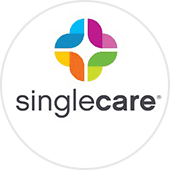Why Virtual Healthcare is Here to Stay
Welcome to the future of healthcare, where your doctor’s office is just a click away, thanks to telemedicine. The revolution happening in medicine is reshaping how we access medical services, offering unprecedented convenience and efficiency. Fueled by cutting-edge technology and recent global events, this transformation has made virtual visits to the doctor the new norm. As telehealth proves its value, it’s evident that this is not a fleeting trend but a permanent fixture in medicine. Here’s why telemedicine is here to stay and how it’s revolutionizing healthcare for the better.
What is Telemedicine?
Telemedicine is a type of non-emergency virtual doctor’s visit. In this type of visit, patients use their smartphone, tablet, or computer to receive a specific clinical service from a healthcare practitioner rather than meeting in person. The visit is typically in real-time and may include a follow-up visit or messages in an online portal or app.
Telemedicine vs Telehealth
Telemedicine and Telehealth are often used interchangeably, but they are different. Telehealth is a broader term with a much larger meaning than just virtual visits. It includes anything technology-related used by a patient or a practitioner to improve a patient’s healthcare experience. Telehealth can consist of anything from health monitoring through the use of wearables to online patient education to reviewing blood work with a direct primary care doctor. Telemedicine, or a virtual office visit, is just one type of telehealth.
The Rise of Telemedicine
Although telemedicine has existed for over 50 years, it was not widely used until recent years. Virtual healthcare became more readily available with the improvements in high-speed internet, video conferencing, and web-camera technology. However, the COVID-19 pandemic ultimately brought about the demand for telemedicine and, subsequently, its rising popularity that exists today. As technology improved, the federal government played a role by passing legislation that allowed for Medicare coverage of telemedicine. Telemedicine helped to increase healthcare during the Pandemic while limiting the transmission of COVID-19.
What Types of Services Does Telemedicine Include?

Post-Op Follow-up Visit: A patient can conduct a routine follow-up visit via telephone or video conferencing.
Healthcare Monitoring: After surgery, treatment, or therapy, the doctor can monitor the patient and help support their health and recovery process.
Transmission of Vitals: A doctor can review blood pressure data, heart monitoring, and glucose levels with a patient during a virtual visit.
Chronic Care Management: Patients with chronic illnesses can avoid a doctor’s visit and set up a virtual visit to care for an ongoing illness.
Preventive Care: Patients can receive preventive care virtually.
Benefits of using Telemedicine
- Increased Access to Care: Telemedicine breaks down geographical barriers. It provides access to medical care for people in remote or underserved areas. These patients might otherwise go without healthcare or face long travel times to see a provider. Many telemedicine services are available 24 hours a day and seven days a week, while in-person physicians are not.
- Convenience: Patients can receive care from the comfort of their homes. The elderly, working individuals, disabled, or those with young children can seek healthcare without leaving their homes. For many, this can mean the difference between receiving care and going without.
- Access to Specialists: Thanks to telemedicine, patients have better access to specialists who may practice in other states or across the globe. Often, an appointment can be made more quickly by telemedicine than in person.
- Qualified Staff: Telemedicine patients have regular access to U.S. board-certified doctors and nurse practitioners who can diagnose and prescribe medication.
- Cost-Effective: Telemedicine not only benefits patients but also healthcare systems, leading to significant cost savings. This is achieved through reduced travel expenses, fewer missed appointments and decreased overhead costs associated with maintaining physical office space.
- Infection Control: Telemedicine minimizes in-person visits and reduces the risk of exposure to infectious diseases. This is particularly crucial during outbreaks such as the COVID-19 pandemic.
- Reduced Hospital Re-admission Rates: While telemedicine is recommended for non-emergencies, its use and function allow patients to seek health care more frequently. This can reduce the need for subsequent hospital visits.
- Technological Advancements: Innovations in telehealth technology, such as high-definition video conferencing and secure data transmission, continuously improve virtual care’s quality and reliability.
Challenges to Telemedicine:
Technology Barriers: Telemedicine requires reliable internet access and familiarity with digital tools. This can be a barrier for people who do not have internet access, such as low-income families, the elderly, or those who live in remote areas.
Privacy and Security: Ensuring the confidentiality and security of patient information is essential. Anytime sensitive or personal information is sent using any technology, privacy concerns will arise. Security can be a bigger concern when patients are using public Wi-Fi.
Regulatory and Licensing Issues: Navigating different regulations and licensure requirements across regions can be tricky, limiting what practitioners can do and prescribe to patients.
Limitations: Telemedicine has limitations when it comes to making a diagnosis. Some illnesses or conditions cannot be diagnosed virtually and require an in-person visit.
Quality of Care: Maintaining the standard of care comparable to in-person visits.
Telemedicine has grown significantly, particularly during the COVID-19 pandemic, to provide safe and continuous care while minimizing the risk of virus transmission.
Knew Health and Telemedicine

The telemedicine revolution has reshaped healthcare, making it more accessible, efficient, and convenient. As technology advances and patients increasingly seek flexible care options, telemedicine is not just a temporary solution but a permanent fixture in the future of healthcare.
To learn more about a Knew Health Membership, visit our website. Or schedule a call with our Care Team to answer your questions about your alternative healthcare solution today.
Disclaimer: This information is being provided to you for educational and informational purposes only. It is being provided to educate you about how to take care of your body and as a self-help tool for your own use so that you can reach your own health goals. It is not intended to treat or cure any specific illness and is not to replace the guidance provided by your own medical practitioner. This information will be used at your own risk based on your judgment. If you suspect you have a medical problem, we urge you to take appropriate action by seeking medical attention.














































